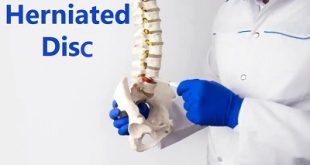Definition
Hearing loss, or hearing impairment, is the partial or total inability to hear sounds in one or both ears. It can range from mild to profound and can be caused by factors such as age, exposure to loud noises, genetic conditions, illnesses and infections, ototoxic medications, or trauma. It can impact a person’s ability to understand speech, follow conversations, and perceive certain sounds, affecting their social interactions, education, and overall quality of life. Treatment options, including hearing aids, assistive listening devices, cochlear implants, and rehabilitation services, depend on the cause and severity of the hearing loss. It is important to consult with a healthcare professional for proper evaluation and management.
How hearing works?
To understand how it happens, it can be helpful to understand how hearing works.
The ear has three main parts: the outer ear, middle ear and inner ear. Sound waves pass through the outer ear and cause the eardrum to vibrate. The eardrum and three small bones of the middle ear make the vibrations bigger as they travel to the inner ear. There, the vibrations pass through fluid in a snail-shaped part of the inner ear, known as the cochlea. Attached to nerve cells in the cochlea are thousands of tiny hairs that help turn sound vibrations into electrical signals. The electrical signals are transmitted to the brain. The brain turns these signals into sound.
Types of Hearing loss
There are three types are as follows:
Sensorineural
It is the most common type and it occurs when the inner ear nerves and hair cells are damaged perhaps due to age, noise damage or something else. This type impacts the pathways from your inner ear to your brain. Most times, sensorineural hearing loss cannot be corrected medically or surgically, but can be treated and helped with the use of hearing aids.
Conductive
It is typically the result of obstructions in the outer or middle ear perhaps due to fluid, tumors, earwax or even ear formation. This obstruction prevents sound from getting to the inner ear. This type can often be treated surgically or with medicine.
Mixed
It is just what it sounds like a combination of sensorineural and conductive hearing loss.
As with any medical condition, it’s best to know what you “have” before deciding what to do about it. A consultation with a hearing professional can help determine the type, cause and degree of your hearing loss.
Degrees of hearing loss
Mild: A person with a mild hearing loss may hear some speech sounds but soft sounds are hard to hear.
Moderate: A person with a moderate hearing loss may hear almost no speech when another person is talking at a normal level.
Severe: A person with this degree will hear no speech when a person is talking at a normal level and only some loud sounds.
Profound: A person with a profound hearing loss will not hear any speech and only very loud sounds.
Epidemiology
It is a prevalent condition worldwide, with a significant impact on individuals and society. The epidemiology of reveals its widespread occurrence across different age groups and populations. According to global estimates, it is estimated that over 5% of the world’s population, or around 466 million people, have disabling hearing loss, with the majority residing in low- and middle-income countries. The incidence and prevalence increase with age, making it a common condition among older adults.
Additionally, noise-induced hearing loss, often associated with occupational and recreational noise exposure, affects a substantial number of individuals, particularly in industries such as manufacturing, construction, and music. Moreover, it can affect children and adolescents, either due to congenital factors, genetic conditions, or acquired causes such as ear infections. Given its wide-ranging impact, addressing the epidemiology is crucial for public health planning, early identification, prevention strategies, and access to appropriate interventions and support for individuals affected by hearing loss.
Pathophysiology of Hearing Loss
It can occur due to various pathophysiological mechanisms that affect the delicate structures involved in hearing. In the case of sensorineural hearing loss, which is the most common type, damage or dysfunction occurs in the cochlea or the auditory nerve pathways. This can result from age-related degeneration, exposure to loud noises that damage the hair cells in the cochlea, genetic factors affecting the structure or function of the inner ear, certain medications that have ototoxic effects, or underlying medical conditions.
Conductive hearing loss, on the other hand, occurs when sound transmission to the inner ear is hindered due to problems in the outer or middle ear, such as ear infections, fluid accumulation, or structural abnormalities. Mixed hearing loss involves a combination of sensorineural and conductive components. Regardless of the type, it disrupts the conversion of sound waves into electrical signals that the brain can interpret, leading to reduced or impaired hearing sensitivity and speech understanding. Understanding the pathophysiology helps guide the selection of appropriate treatments and interventions to address the underlying causes and improve hearing function.
General symptoms of hearing loss
Early signs can include:
- Difficulty hearing other people clearly and misunderstanding what they say, especially in group situations
- Asking people to repeat themselves
- Listening to music or watching television with the volume higher than other people need
- Difficulty hearing the telephone or doorbell
- Finding it difficult to tell which direction noise is coming from
- Regularly feeling tired or stressed, from having to concentrate while listening
In some cases, you may recognise signs in someone else before they notice it themselves. Research suggests it takes 10 years from the time someone notices they have hearing loss, before they do anything about it.
If you also hear a ringing, buzzing or whistling sound in your ears, this could be a sign of tinnitus, which is often associated with hearing loss.
Causes
Loud noises frequently cause hearing loss. Sometimes this exposure is sudden and short-term. Attending a loud concert or being close to a gun blast can damage hearing.
Long-term noise exposure affects many professions. Farmers, construction workers, musicians and military members are most at risk. Occupational hearing loss is a top work-related illness in the U.S.
Other factors that raise your likelihood include:
- Congenital conditions such as cytomegalovirus (CMV).
- Coronary artery disease (heart disease), high blood pressure (hypertension) and strokes.
- Damage or trauma from an accident or injury — even something as simple as inserting a cotton swab too far into the ear.
- Diabetes.
- Ear infections, earwax buildup or ruptured eardrum.
- Exposure to chemicals.
- Family history.
- Medications to treat cancer, heart disease and infections.
- Tumors (acoustic neuroma).
Hearing loss risk factors
Any of the following scenarios increase your risk of developing gradual hearing loss:
- Being over 60 years old, when age-related hearing loss is more likely to occur
- Frequent exposure to excessive noise, such as from loud machinery or gunfire
- History of smoking
- Having a close family relative with hearing loss, or a family history of genetic disorders with hearing loss
- Having heart disease or diabetes
The more of these risk factors you have, the more likely you will experience hearing loss. It is usually gradual.
Complications of Hearing Loss
It can lead to several complications that can affect various aspects of a person’s life. Some of the potential complications include:
- Communication difficulties: Difficulty understanding conversations and participating in social interactions.
- Reduced quality of life: Limitations in enjoying activities and potential feelings of depression, anxiety, and loneliness.
- Cognitive decline: Increased risk of cognitive decline, dementia, and Alzheimer’s disease.
- Safety risks: Difficulty hearing important auditory cues and warning signs, potentially compromising personal safety.
- Educational and occupational challenges: Learning difficulties for children and workplace communication issues for adults.
- Mental and emotional health issues: Frustration, embarrassment, and increased risk of depression and anxiety.
- Increased healthcare needs: Regular hearing assessments, hearing aid management, and associated healthcare costs.
It is important for individuals with hearing loss to seek appropriate medical intervention and support to address these complications and improve their overall well-being.
Diagnosis of Hearing Loss
To figure out how much of your hearing you’ve lost, your doctor can do the following tests:
- Physical exam to look in your ear for earwax buildup, infection, or structural problems.
- General screening tests that involve covering one ear at a time to see how well you hear spoken words at different volumes.
- Tuning fork tests using two-pronged metal instruments that make a sound when you tap them. Your doctor can tell how well you hear them. The test can also help pinpoint where in your ear the hearing loss is.
- Audiometer tests where you wear earphones and listen for sounds directed into your ear. This test is done by an audiologist and can measure the level of sound you can hear more accurately than other screening tests.
There are also tablet and smartphone apps you can use on your own to screen for hearing loss.
Treatment
The treatment options depend on the type, severity, and underlying cause of the condition. Here are some common treatments:
- Hearing aids: These are small electronic devices worn in or behind the ear that amplify sounds and improve the clarity of speech. Hearing aids can be customized to address specific types and degrees of hearing loss.
- Cochlear implants: This option is suitable for individuals with severe to profound hearing loss who do not benefit from hearing aids. Cochlear implants bypass damaged parts of the inner ear and stimulate the auditory nerve directly, providing a sense of sound.
- Assistive listening devices: These devices help individuals hear better in specific situations. Examples include amplified telephones, TV listening systems, and personal FM systems that transmit sound directly to hearing aids or cochlear implants.
- Middle ear implants: This surgical option is suitable for specific cases of hearing loss, such as conductive or mixed hearing loss. Middle ear implants improve sound transmission to the inner ear by directly stimulating the middle ear structures.
- Medications and surgery: Some types caused by specific medical conditions or abnormalities may be treated with medications or surgical interventions. This includes cases of ear infections, otosclerosis (abnormal bone growth in the middle ear), or certain tumors.
- Communication and auditory training: Rehabilitation programs, such as speech therapy and auditory training, can help individuals with hearing loss improve their communication skills, speech understanding, and ability to process sound effectively.
It is important to consult with an audiologist or hearing healthcare professional who can evaluate the specific needs and recommend the most appropriate treatment options for each individual’s hearing loss.
Preventing Hearing Loss
Not all cases are preventable. However, there are many steps that you just will want to guard your hearing:
- Use safety instrumentation if you’re employed in areas with loud noises, and wear earplugs when you swim and attend concerts
- The National Institute on Deafness and Other Communication Disorders reports that fifteen percent of individuals ages twenty to sixty nine experienced hearing impairment because of repeated exposure to loud noises.
- Have regular hearing tests if you’re employed around loud noises, swim often, or attend concerts on an everyday basis.
- Avoid prolonged exposure to loud noises and music.
- Seek help for ear infections. They may cause permanent harm to the ear if they’re left untreated.
 Diseases Treatments Dictionary This is complete solution to read all diseases treatments Which covers Prevention, Causes, Symptoms, Medical Terms, Drugs, Prescription, Natural Remedies with cures and Treatments. Most of the common diseases were listed in names, split with categories.
Diseases Treatments Dictionary This is complete solution to read all diseases treatments Which covers Prevention, Causes, Symptoms, Medical Terms, Drugs, Prescription, Natural Remedies with cures and Treatments. Most of the common diseases were listed in names, split with categories.







